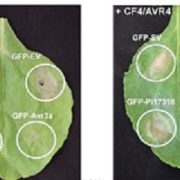
To the VIKtor goes the Spoils: The Phytophthora infestans Effector Pi17316 Manipulates the Host MAP3K VIK to Promote Disease Susceptibility in Potato (OA)
Plant Science Research Weekly, Research BlogPhytopathogens secrete effector proteins that enter and manipulate plant cells to facilitate microbial growth in planta. This is often achieved by exerting specific activity onto key host proteins to divert host cellular functions towards supporting pathogen growth. In a recently published article in…

Fresh as an Exitron: A Flower-specific Splice Variant of AUXIN RESPONSE FACTOR8 Helps Shape the Stamen
Research Blog, The Plant Cell, The Plant Cell: In BriefEukaryotic genes contain protein-coding exons interspersed with non-coding introns. While introns are usually spliced out of mRNA (often in conjunction with various exons), intron retention usually causes mRNA to remain in the nucleus instead of being exported to the cytoplasm for translation. This process…
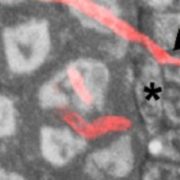
The Trojan Horse Approach to Protein Jockeying
Blog, Research Blog, The Plant Cell, The Plant Cell: In BriefIn the decades since Agrobacterium tumefaciens was first used as a vector to deliver genetic material into plants (Zambryski et al., 1983), this powerful tool has provided important insights into the biological functions of countless gene products. However, this approach has its shortcomings; in addition…
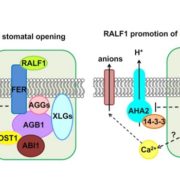
FERONIA-RALF and G Proteins in Guard Cell Response
Plant Physiology, Plant Physiology: On The Inside, Research, Research BlogHeterotrimeric guanine nucleotide-binding (G) proteins are composed of Ga, Gb, and Gg subunits and function as molecular switches in signal transduction. In Arabidopsis, there is one canonical Ga (GPA1), three extra-large Ga (XLG1, XLG2, and XLG3), one Gb (AGB1), and three Gg (AGG1 to 3) subunits. Despite…
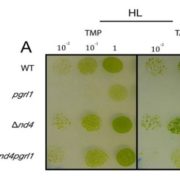
Mitochondria Affect Photosynthetic Electron Transport
Plant Physiology, Plant Physiology: On The Inside, Research, Research BlogPhotosynthetic eukaryotic organisms rely on two organelles, chloroplasts and mitochondria, for the synthesis of the molecules NAD(P)H and ATP that fuel their metabolism. These two organelles are commonly thought of as two separate entities but the results of Larosa et al. (10.1104/pp.17.01249) suggest…
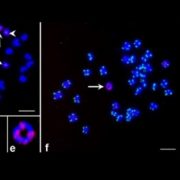
Herbicide Resistance in Common Waterhemp
Plant Physiology, Plant Physiology: On The Inside, Research, Research BlogThe herbicide glyphosate is widely used in agriculture, especially on glyphosate-resistant (GR) transgenic crops. The widespread adoption of GR crops across the globe and an overreliance on glyphosate as a single means of weed control has spawned many GR weed species. Glyphosate inhibits the 5-enopyruvlyshikimate-3-phosphate…
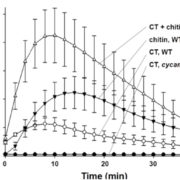
Cellotriose Induces Increases in Cytoplasmic Calcium
Plant Physiology, Plant Physiology: On The Inside, Research, Research BlogThe root-colonizing endophytic fungus Piriformospora indica, which was originally isolated from the rhizosphere of two woody shrubs in the Indian Thar Desert, colonizes the roots of a broad host range, including the model plant Arabidopsis. P. indica does not cause pathogenic symptoms, but promotes root…
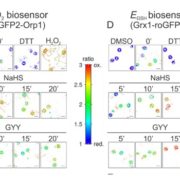
Hydrogen Sulfide’s Role in Stomatal Closure
Plant Physiology, Plant Physiology: On The Inside, Research, Research Blog Hydrogen sulfide (H2S) is an important gaseous signaling molecule in plants that participates in stress responses, development, and stomatal closure. In plants, H2S is enzymatically produced by cysteine desulfhydrase in the catalyzed conversion of cysteine to pyruvate, H2S, and NH3+. In Arabidopsis…

Serotonin Accumulation in High-Lysine Rice
Plant Physiology, Plant Physiology: On The Inside, Research, Research BlogThe nutritional quality of cereals often suffers from a deficiency in essential amino acids, especially lysine. Recently, High Free Lysine (HFL) rice (Oryza sativa) has been genetically engineered. The free lysine content in the mature endosperm of two HFL transgenic lines (HFL1 and HFL2) is increased…

